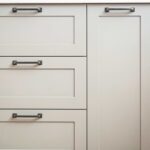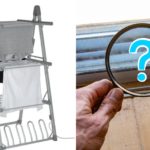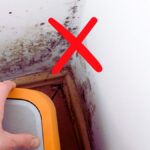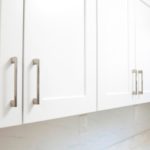The kitchen is one of the most moisture filled areas in a home. Lots of steam is created as you cook, boil water in the kettle, and when you open the dishwasher after a cycle has ended!
Instead of opening a window and releasing this steam outside, this moist air is often left to circulate the kitchen area. In turn, the hot air finds its way into kitchen cupboards and creates dampness.
Damp isn’t just unsightly, it’s also a real terror to get rid of. It makes cupboards smell stale and funky, and it attacks your food supplies. It’s a very unwelcome visitor.
So, how do you get this guest out of your kitchen cupboards? Read on to find out how to get rid of damp from kitchen cupboards.
What Causes Damp in Kitchen Cupboards?
Damp can be caused by many different things. However, in the case of kitchen cupboards it’s typically caused by warm, humid air coming into contact with a cold surface, and this air then turning into water droplets, also known as condensation.
Discover more about this, and what else could be causing dampness in your kitchen cupboards below.
1. Condensation

Condensation is created when water vapour (steam) turns back into its liquid state (water). And it’s one of the most common causes for dampness in kitchen cupboards.
It’s likely that hot steam, typically from boiling pots on the stove and from a boiling kettle, finds its way into kitchen cupboards and settles on the back of the cupboard.
The back of a cupboard is usually a wall, and in a lot of homes the wall in question is an external wall that may or may not have been insulated properly, and will likely be cold to touch.
If the steam lands on a poorly insulated wall, the warm steam will touch the chilly surface and will turn into water droplets, hence condensation. These droplets will start running down the wall and will start to cause damp patches to form.
In a lot of homes, this process goes by unnoticed, so the dampness continues to creep in until the issue is blatantly obvious and has to be treated.
2. Poor air flow
In addition to condensation, poor air flow in kitchen cupboards can also cause dampness.
Kitchen units are usually filled to the brim with out-of-date tins of food, syrups for coffees that have never been opened, and cleaning supplies that have never been used to clean anything.
This chaotic environment means that air doesn’t really flow in, out and around the cupboard as freely as it would like to.
Which, in turn, means that hot air, like the steam mentioned above, often gets trapped in this environment. And because this warm air hasn’t got anywhere to go, it sticks onto the surrounding surfaces and eventually causes dampness.
3. Poor drainage system
Interestingly, an insufficient drainage system can also cause rising damp in homes.
Drains are supposed to carry dirty water away from a house, however, if the drains in question are corroded, blocked or broken, the water in the pipe might not be able to drain away effectively.
This undrained water then puts unnecessary pressure on the drain’s pipework. This, in turn, creates a very moisture-ridden environment where damp can thrive.
As a result of this, damp can start to spread itself more and more around the kitchen area because it’s in an ideal climate and environment.
4. Leaks
Another potential cause of damp is that there could be a leak in or near the kitchen cupboards.
Kitchens are full of various pipes that bring and take water away from various appliances, like the washing machine, the dishwasher, the tap and radiators.
And with so many pipes around it’s not uncommon for an aged pipe to burst, or for a pipe to be knocked out of place, and to start leaking.
If treated quickly, a leaky pipe shouldn’t cause too much damage to a home. But if a leaking pipe is left to lose water, it can wreak havoc.
Water that’s just left to sit stagnant not only becomes smelly, but it can also encourage rising dampness. This can then cause mould and mildew to form all over surfaces, and it can also rot flooring and kitchen cupboards.
Although leaking pipework is a common cause of dampness, you should also check the kitchen for any structural damage that could be allowing water to leak into the room. Check for any gaps or small holes in the roof, for example.
How to Get Rid of Damp from Kitchen Cupboards
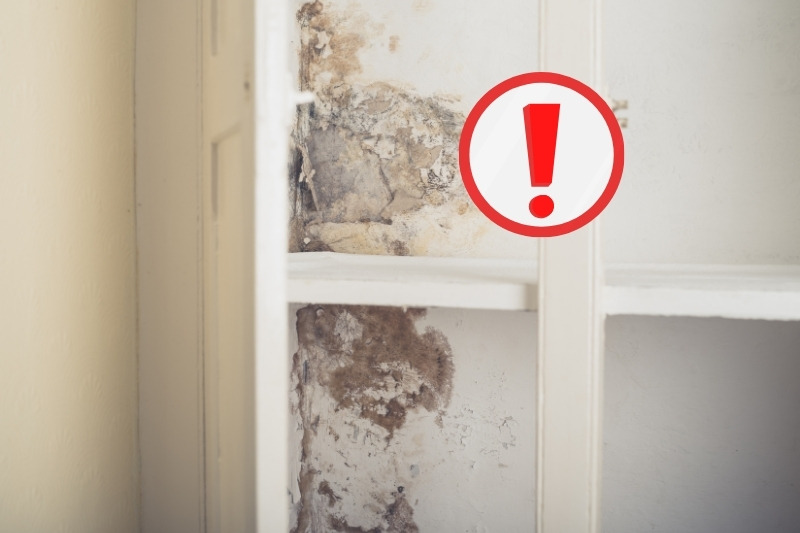
First, find the root of the problem
If you see a damp patch spreading throughout your kitchen cupboards, the first step you need to take is to try and figure out where the damp is coming from.
If you don’t find out where the damp originated from, you might end up on a bit of a wild goose chase, and all you’ll do is treat the symptoms of the problem, rather than eradicating the problem.
Just take a step back to assess what’s going on in your kitchen cupboards – the cause may be more obvious than you think!
The problem is likely caused by one of the following:
- Condensation – extremely common problem
- Poor air flow – very common problem
- Drainage problems – common problem
- Leak – common problem
Once you’ve established where the damp issue has come from you can proceed to treating the problem effectively.
Fixing damp from condensation
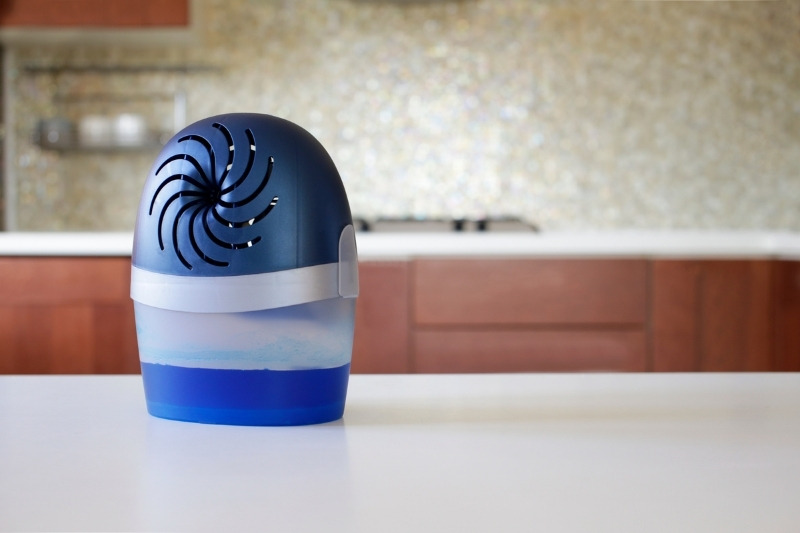
For condensation related issues, you need to:
- Try and reduce the moisture levels in the kitchen wherever possible – pop lids on pans when cooking, place your kettle near an open window, so the steam exits the room when the kettle chimes, for example.
- Make use of extractor fans when making food in the kitchen, or when you’re running several appliances at once. Extractor fans remove hot air from the room, so moisture doesn’t linger around.
- If the bathroom is located near the kitchen, shut the door when the bathroom is in use. Additionally, use the extractor fan in the bathroom to remove moisture and open the window.
- Open windows to leave hot air out of the room, so it’s not left to circulate and create problems
- Add additional air vents to your home if need be. These will allow more air to travel outside, and so the kitchen’s air will become less moisture logged.
- Pop a dehumidifier in the kitchen when you’re cooking, particularly when there’s a lot of steam in the room. You don’t need a huge dehumidifier, a small compact one, like the Pro Breeze Dehumidifier would do the trick in the kitchen. It’s light, has an automatic cut off switch when the tank is full, and can collect up to 250ml of moisture from the air per day. It’s ideal for a kitchen space.
- Wipe your windows down if you see them starting to flood with condensation. You can use a squeegee to help you out with this job. Plus, it’ll give you a streak-free finish.
- Don’t put wet goods in cupboards. Don’t store wet dishcloths in cupboards. Make sure you dry plates and glasses before storing them.
- Pop some newspaper down on the floor of the kitchen cupboard to absorb moisture in the air.
- If your home is poorly insulated and walls feel cold, you should consider getting the walls insulated properly. But you’ll likely need to call a builder in to do this work.
- Use moisture traps to gather lingering moisture – they’re not expensive, and are usually portable and user-friendly. Check out EcoZone’s Room Damp, Mould and Moisture Trap, it’s super easy to use, one moisture pouch lasts up to three months, and you can purchase refill pouches too. Another option is to buy some Small Space Dehumidifier Bags that you could pop into the kitchen cupboards to gather excess moisture.
Fixing damp caused by poor air flow
For poor air flow related issues, you need to:
- Declutter your cupboards so air can move around freely, instead of it being trapped in one place. So, bin items you no longer use, and if you have tins of food that are still in date, you could donate them to a food bank.
- Be space-conscious moving forward. There’s no need to pack goods in tightly.
- Add some small vents to the bottom of your kitchen cupboards to help with air flow.
Fixing damp caused by a poor drainage system
For drain-related issues, you need to:
- Check your drains for blockages and clear any obvious dirt away, like leaves.
- Look at other visible drain-related pipework to see if there are any potential obstructions but be careful when doing this. If you see something, it might be better to call a professional to help you deal with the matter.
- If you’re not sure what to look for, or you don’t want to check the drains yourself, you need to call in a professional to declutter the gutters/drains, and to check the structures. And if there is a problem, the professional in question should be able to rectify the issue for you.
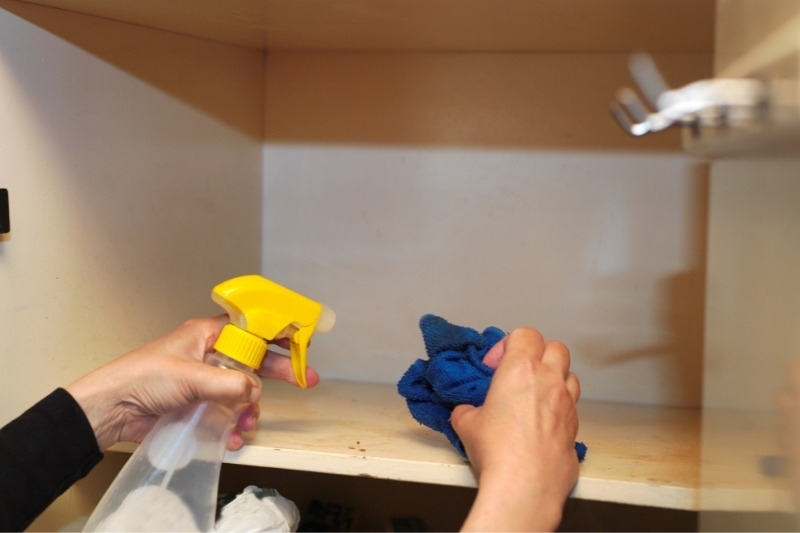
Fixing damp caused by leaks
For leak-related issues, you need to:
- Check pipework that is around the damp-ridden area, and fix the damaged/broken pipework as quickly as you can.
- You might need to call in a professional plumber if the problem is difficult to locate and could be challenging to fix.
- Check the walls for any cracks where moisture could be coming in. And if you see any problems you’ll likely have to call in a builder to sort the issue out.
Extra steps to follow
In addition to the above you will also need to carry out the following steps when getting rid of damp in kitchen cupboards.
Clean the affected cupboards
One of the key steps when dealing with damp is to actually clean it off a surface.
To do this you can buy a damp cleaner and follow the instructions on the bottle. Or you can create your own bleach-based cleaning solution at home.
Simply mix one part chlorine bleach with three parts water in a tub, soak a cloth in the water, wring it out and start blotting at the infected areas.
Once the cleaning session has ended, the area needs to be left alone to dry.
Note: You can still clean away the damp even if you’re waiting for a builder to come and do some repair work for you. It’ll make the kitchen cupboards look and smell appealing in the meantime.
Paint the damp-ridden area
In addition to cleaning off the damp, you could also apply a damp sealer to the back of the cupboard. This will give the cupboard some more protection.
Polar Damp Seal is one option you can look into. This 500ml can come in different colours, so you can choose a colour that’ll suit the kitchen cupboards.
You must leave the sealer to dry before you add your items back into the unit. And once this is done you should consider painting the cupboard with an anti-mould paint.
The anti-mould paint will add another layer of protection to the kitchen cupboard.
Replace kitchen cupboards if necessary
One final thing you might have to do is replace some kitchen cupboards if they are very damaged. Particularly any backing boards that may have been plagued by the damp.
But this is something to consider once you’ve cleaned and treated the dampness.
It is pointless replacing damaged parts before treating the damp, because the damp will keep on coming back and will continue to ruin the units.
You must always treat and eradicate dampness first, and only then can you consider replacing any damaged cupboards.
How to Keep Moisture Out of Drawers
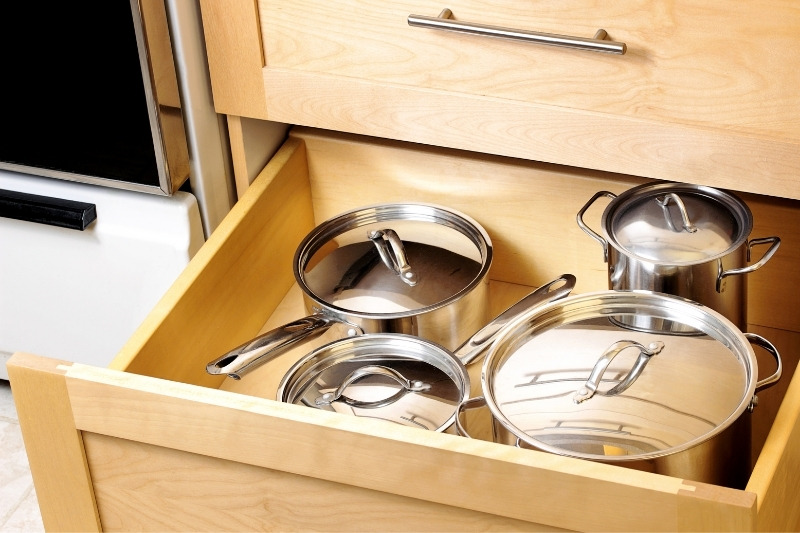
Drawers, like kitchen cupboards, can also be troubled by dampness. And to resolve the issue, follow the points listed above.
Make sure you have sufficient air flow, limit the amount of condensation in the room, and check for structural problems that could be causing the damp. Once you find the cause you can treat the dampness effectively.
Does Opening Windows Reduce Damp?
Yes, opening a window will reduce dampness as long as it isn’t raining outside.
If it is raining, and this moisture finds its way indoors, this can cause dampness to form.

Bethan has a passion for exploring, reading, cooking and gardening! When she’s not creating culinary delights for her family, she’s concocting potions to keep her house clean!

